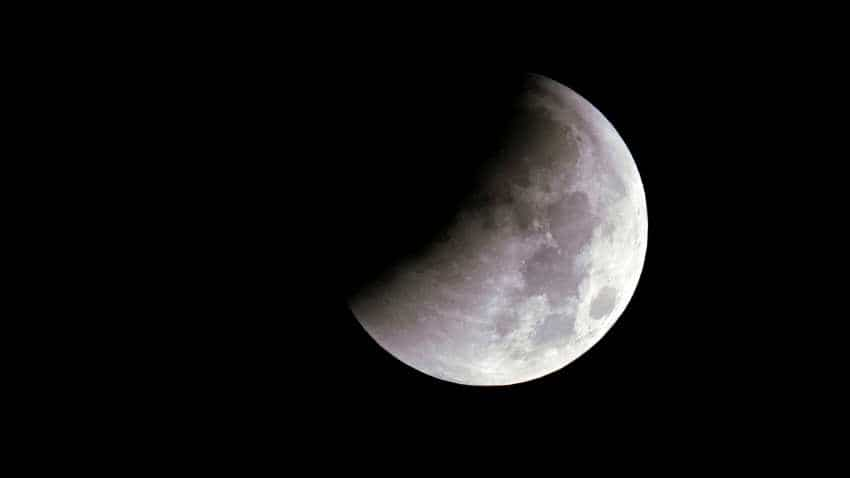Researchers find moon-forming disk around distant planet
"There are a handful of candidate planets that have been detected in disks, but this is a very new field and they are all still debated, (PDS 70 b and PDS 70 c) are among the most robust because there have been independent observations with different instruments and techniques," Isella added.

Using Earth`s most powerful array of radio telescopes, scientists have made the first observations of a circumplanetary disk of gas and dust like the one that is believed to have birthed the moons of Jupiter.
The study, published in the Astrophysical Journal Letters, adds to the intriguing story of planet PDS 70 c -- a still-forming gas giant about 370 light years from Earth that was first revealed last month in visible light images.
Using the massive 66-antenna Atacama Large Millimeter/submillimeter Array (ALMA) in Chile, astronomers collected millimeter wave radio signals that revealed the presence of dust grains throughout the star system where PDS 70 c and its sister planet, PDS 70 b, are still forming.
"Planets form disks of gas and dust around newly forming stars and if a planet is large enough, it can form its own disk as it gathers material in its orbit around the star.
"Jupiter and its moons are a little planetary system within our solar system, for example, and it`s believed Jupiter`s moons formed from a circumplanetary disk when Jupiter was very young," said Andrea Isella, Assistant Professor at Rice University in the US.
According to the researchers, most models of planet formation show that circumplanetary disks disappear within about 10 million years, which means these disks have not existed in our solar system for more than 4 billion years.
To look for them elsewhere and gather observational evidence to test theories of planet formation, astronomers search for very young star systems where they can directly observe disks and the planets still forming inside them.
In the study, researchers analyzed observations made by ALMA in 2017.
"There are a handful of candidate planets that have been detected in disks, but this is a very new field and they are all still debated, (PDS 70 b and PDS 70 c) are among the most robust because there have been independent observations with different instruments and techniques," Isella added.
PDS 70 is a dwarf star about three-quarters the mass of the sun. Both of its planets are 5-10 times larger than Jupiter and the innermost, PDS 70 b, orbits about 1.8 billion miles from the star, roughly the distance from the sun to Uranus. PDS 70 c is a billion miles further out, in an orbit about the size of Neptune`s.
PDS 70 b was first revealed in 2018 in infrared light images from a planet-hunting instrument called SPHERE at the European Southern Observatory`s Very Large Telescope (VLT).
In June, astronomers used another VLT instrument called MUSE to observe a visible wavelength of light known as H-alpha, which is emitted when hydrogen falls onto a star or planet and becomes ionised.
"H-alpha gives us more confidence that these are planets because it suggests they are still drawing in gas and dust and growing," Isella said.
The millimeter wavelength observations from ALMA provide even more evidence.
Get Latest Business News, Stock Market Updates and Videos; Check your tax outgo through Income Tax Calculator and save money through our Personal Finance coverage. Check Business Breaking News Live on Zee Business Twitter and Facebook. Subscribe on YouTube.
RECOMMENDED STORIES

Senior Citizen FD Rates: Know your returns on Rs 10 lakh investment from banks like SBI, PNB, HDFC Bank, ICICI Bank and others in 5 years

Top Large & Mid Cap Mutual Funds: Rs 5 lakh lump sum investment in 5 schemes has grown to at least Rs 14.2 lakh in 5 years; see full list
01:22 PM IST









 ISRO to put first astronaut on Moon by 2040
ISRO to put first astronaut on Moon by 2040  Japan launches moon sniper lunar lander SLIM into space
Japan launches moon sniper lunar lander SLIM into space ISRO completes launch rehearsal, vehicle internal checks ahead of launch of Aditya-L1 mission
ISRO completes launch rehearsal, vehicle internal checks ahead of launch of Aditya-L1 mission Rare Super Blue Moon to be visible on this day: Check when to watch
Rare Super Blue Moon to be visible on this day: Check when to watch Chandrayaan-3 Landing: India creates history, lunar lander module successfully soft lands on Moon surface
Chandrayaan-3 Landing: India creates history, lunar lander module successfully soft lands on Moon surface